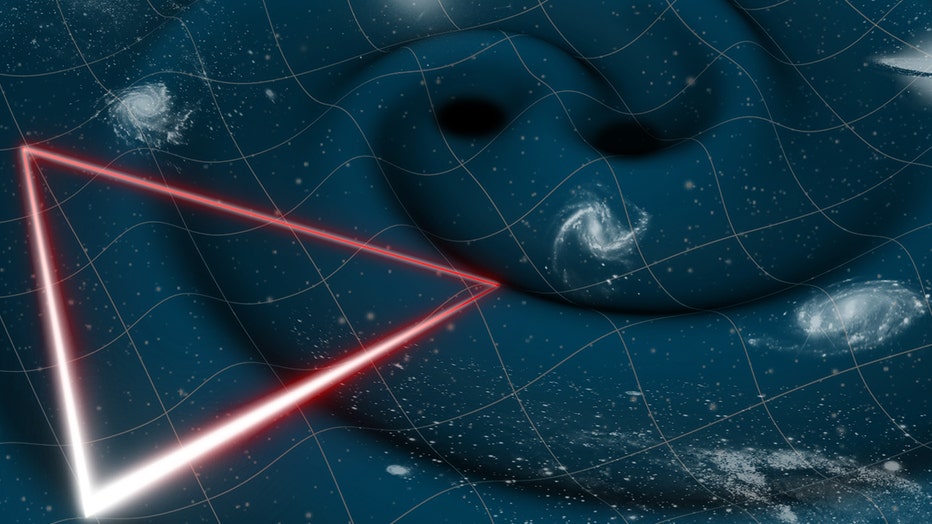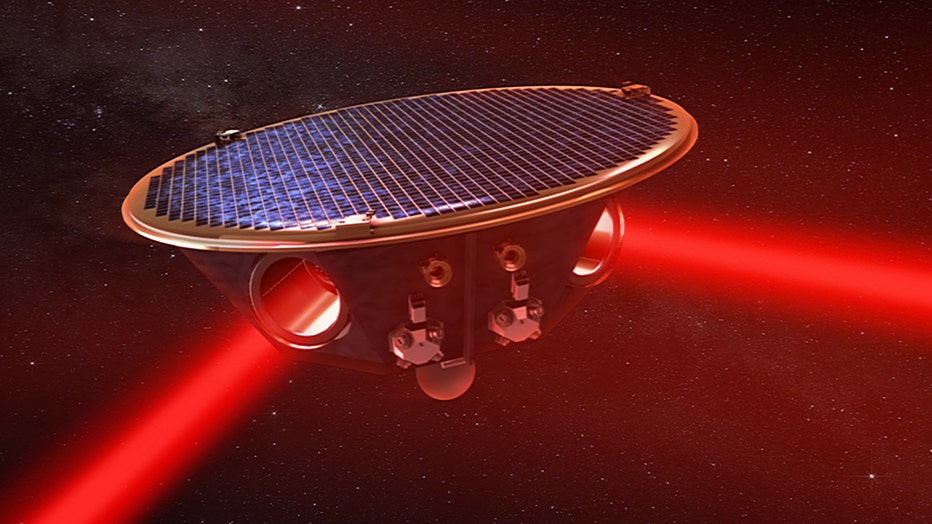ESA to use laser beams in space to study gravitational waves

NASA shares Christmas Tree Cluster of stars
"It's beginning to look a lot like cosmos," NASA joked on Twitter.
A triangle of three spacecraft shooting laser beams at each other in space sounds like something from a science fiction movie. However, the European Space Agency revealed this will become a reality by 2035.
Last month, the space agency approved the mission, known as the Laser Interferometer Space Antenna (LISA), and gave the team the go-ahead to build the instruments and spacecraft. NASA will also provide several key components of LISA’s instrument suite along with science and engineering support.
According to the ESA, the objective is to detect and study gravitational waves from space. The mission is also poised to capture the predicted gravitational ‘ringing’ from the initial moments of our Universe and offer a direct glimpse into the very first seconds after the Big Bang.
"LISA is an endeavour that has never been tried before," lead project scientist Nora Lützgendorf said in a statement. "Thanks to the huge distance travelled by the laser signals on LISA, and the superb stability of its instrumentation, we will probe gravitational waves of lower frequencies than is possible on Earth, uncovering events of a different scale, all the way back to the dawn of time."

During the LISA mission, three spacecraft will fly in formation, forming a triangle connected by laser beams to detect gravitational waves (Credit: ESA)
LISA will consist of three spacecraft flying in a vast triangular formation that follows Earth in its orbit around the Sun. Each arm of the triangle stretches 1.6 million miles.
The spacecraft will then track internal test masses affected only by gravity. Gravitational waves from sources throughout the universe will produce oscillations in the lengths of the triangle’s arms, and LISA will capture these changes.
Closer to home, LISA will also detect many merging pairs of compact objects like white dwarfs or neutron stars and give insight into the final stages of the evolution of these systems.

The LISA (Laser Interferometer Space Antenna) mission, led by ESA (European Space Agency) with NASA contributions, will detect gravitational waves in space using three spacecraft, separated by more than a million miles, flying in a triangular formati
By pinpointing their position and distances, the ESA says that LISA will further our understanding of the structure of the Milky Way.
RELATED: NASA announces potentially habitable ‘super-Earth,’ only 137 light-years away
"For centuries we have been studying our cosmos through capturing light. Coupling this with the detection of gravitational waves is bringing a totally new dimension to our perception of the Universe," LISA project scientist Oliver Jennrich said.
The launch of the three spacecraft is planned for 2035.

